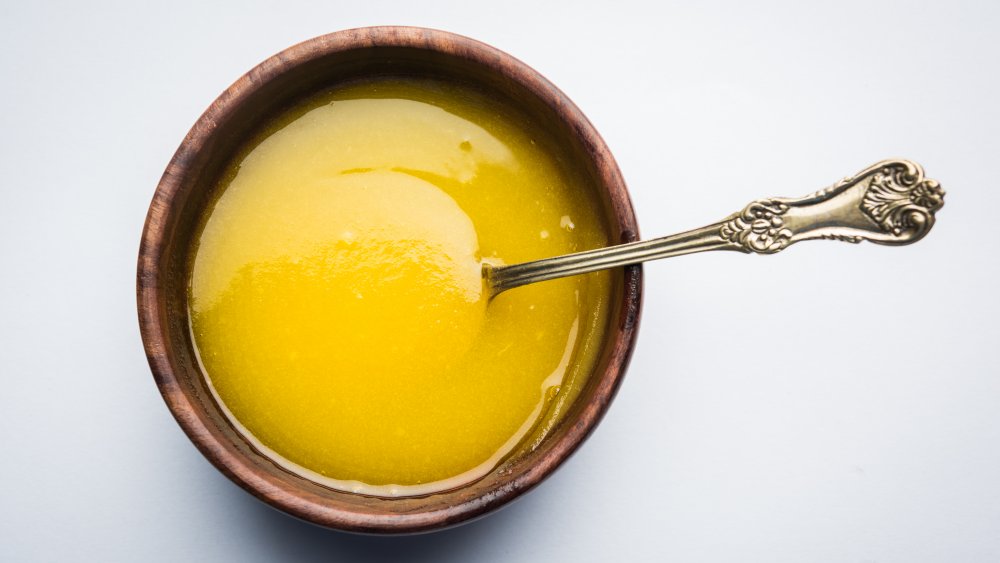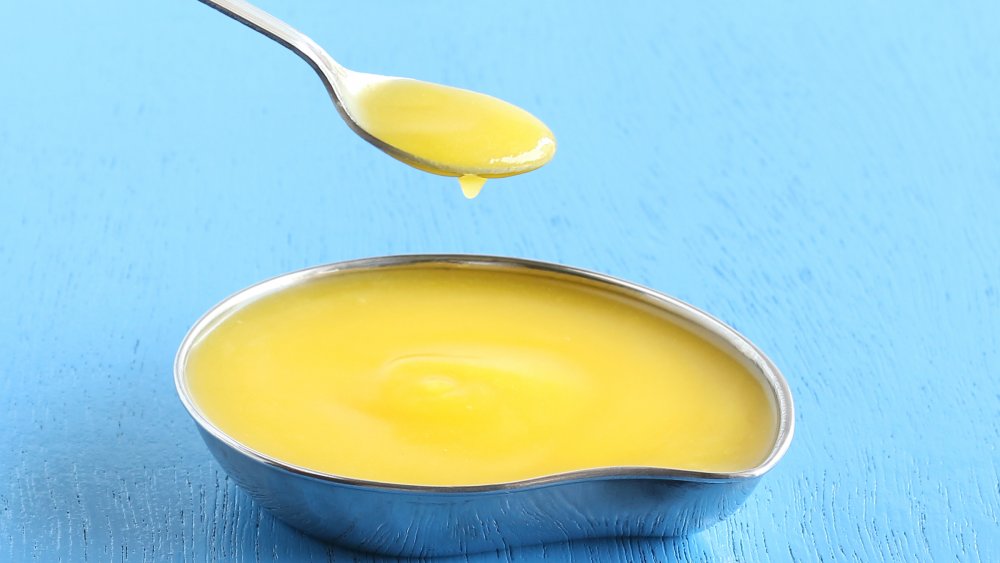Here's How You Should Be Storing Your Clarified Butter
Clarified butter, or ghee as it's known for Indian cuisine, is created when milk solids are removed from butter. It has a higher smoke point than regular butter, and therefore doesn't burn easily — even if you're using high heat or you're frying something for a long time. You can purchase it in the store or make your own at home (via Foodie with Family).
Of course, it's possible to keep it in the fridge, but as it is more often than not stored in a jar or can, it can be a little difficult to get the amount of butter you want when it's at refrigerator temperature, which means you may have to leave it out of the fridge for a while before it's soft enough to work with. While it's possible to slice through a stick of butter with a sharp knife, a knife does no good in this scenario and you'll be stuck chipping away at the cold, solid clarified butter with a spoon.
The best temperature for ghee
At room temperature, on the other hand, clarified butter is semi-solid and extremely easy to work with. You can dip a spoon in the jar and scoop up the desired amount of butter, which at room temperature has a consistency only slightly thicker (and a bit chunkier) than olive oil.
The removal of the milk solids in the butter, which are what spoil when it comes to regular butter, is what allows it to be kept at room temperature (via Does it Go Bad?). Clarified butter can be kept at room temperature for around six months in an airtight container, but it's important not to let any water get into the vessel in which it's being stored as it can cause the butter to spoil (via What's Cooking America).
However, if you don't think you'll go through the butter very quickly and you have all the time in the world while cooking to allow it to soften, the refrigerator may be a good place to store it because it will keep for several months (via Our Everyday Life).

